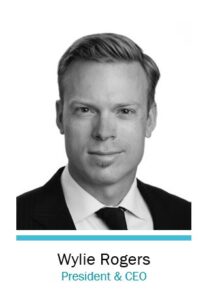The Role Of Ceos As Chief Reputation Managers
by Wylie Rogers, CEO, The Tantalus Group
Europe’s most admired company. A skyrocketing share price. Harvard Business Review profiles. The lead story the Wall Street Journal, glowing headlines in the Financial Times, producers begging you to appear on the BBC and CNBC. Positive coverage in Caijing Magazine and the Times of India. Employee engagement surveys that shine.Suddenly you’re a LinkedIn influencer, a Twitter darling, a thought leader. All these things come to CEOs at the top of their game.Based on experience in North America, Europe, Asia, and the Middle East, in the energy, aerospace, engineering, chemicals, and finance sectors, there are three things a CEO must do to positively manage the reputation of his or her company:
1. Deliver exceptional performance
2. Create the right culture and behaviors for sustained success
3. Communicate transparently with all audiences unless that would violate regulatory or legal proscriptions, such as materiality or proprietary protections
Unfortunately, many fail to keep these three things in balance. Following are three examples to bring these things to life, as well as a summary of why the CEO needs to be the chief reputation manager of any company worth its salt.7.7.1 Engineering Sector Case Study
Our first example starts with a successful Swedish CEO who delivered exceptional performance for a long time. This was the era of iconic CEOs like Steve Jobs, Lee Iacocca, Jack Welch and P. Roy Vagelos. Year after year of profitable acquisitions, quarter after quarter of hitting targets. This CEO communicated openly with employees, inspiring them to build a juggernaut of a global company in hundreds of countries and admired by many. There was a palpable pride in working for the company. The CEO was charming, funny and adventurous, so the media loved him. He could also be serious and analytical, which investors appreciated. Customers wanted to be around him, so infectious was his energy. But there was one area he overlooked. Perhaps it was the Greek Achilles heel of hubris. Perhaps it was something else. Behind the scenes, this CEO didn’t behave the way people expected him to. Details of a secret pension package came to light after an inquiry by an activist investor. And the bubble soon burst. Acquisitions unraveled, lawsuits flew. The share price collapsed from a high in the 200s to a low in single digits. Analysts and investors panicked. The media fed the beast, and the CEO was soon gone. So began a long process of reputation repair, led by a more modest CEO of German heritage. This CEO was less charismatic, more pragmatic. And from crisis came opportunity. The new CEO slowly, methodically, put the three things back in balance.
Energy Sector Case Study
The second example looks at another CEO, head of a national energy company headquartered in Asia, who delivered good results for his company, which was in turn a major contributor to the gross domestic product (GDP) of his home country. His behavior was generally in line with what was expected of him, and he was an effective communicator, sometimes prone to bursts of emotion, but generally serious with investors and analysts, tough with partners and suppliers, and authoritative with employees looking for leadership. Communications appeared to be in order. However, the sands were shifting beneath his feet. A major project in Canada was in trouble due to a failure to properly consult First Nations, engage communities, and align the expectations of provincial and federal governments. A clash of Western and Asian cultures seemed to be at work as less consultation would take place in his home country. In parallel, questionable behavior by employees of his company in parts of Africa came under scrutiny, as did the company’s safety performance in environmentally sensitive areas of his home country. A final nail in the coffin, it appeared that the company was failing to modernize and prepare its bloated workforce for future competition due to low energy prices. The CEO had failed to deliver on the performance and behavioral aspects of reputation. In business, good communication cannot make up for poor performance or bad behavior. The three things were no longer in balance, and the CEO was quietly replaced by a more stable set of hands. One could argue he was made the scapegoat for what the Harvard Business Review calls a “white knight” savior of a replacement (“The Curse of the Superstar CEO,” by Rakesh Khurana, September 2002). But one could also say he should have better managed the company’s reputation as an asset.
Lifestyle Case Study
One final story brings us to the Emirates, a fast-growing, volatile and dynamic part of the world at the time of writing. A young, charismatic Lebanese CEO at the helm of a successful lifestyle company. He pushes a relentless pace, moving the company from a slow-moving ship liner to a data analytics and innovation-fueled speedboat. Consultants from McKinsey abound. Performance takes off, making the company’s founders very happy indeed. Employees too—they love working for a recognized brand that is expanding across the region. Invites to the World Economic Forum in Davos arrive. “Finally a clear and eloquent voice of business from the Middle East,” they say. But all is not well. The pace is perhaps too fast for the CEO’s closest allies. While he was earlier perceived as visionary, he now sounds somewhat removed from reality. His speeches become sermons, running much longer than scheduled. Office politics start and burnout sets in. Teams lose focus. The company’s narrative grows muddled. “Who are we and what do we stand for?” employees ask. “Are we a collection of brands or do we have a greater purpose?” Increased economic volatility in the Emirates disrupts new business lines, especially property development. An observer says, “You can talk all you want about AI, sustainability and innovation, but if performance falters, you’ve got big problems.” The CEO has suffered from perhaps the biggest reputation challenge of all: He can’t articulate a strategy that his people can understand. His communications is weak and unfocused. To this day, he is still employed, but for how long?
The Cultural Component to Leadership
There is one more element to these three stories and the balance of performance, behavior and communications. Culture is the way in which we solve problems (Riding the Waves of Culture, by Fons Trompenaars and Charles Hampden-Turner, New York: McGraw Hill, 1997). The first company is of Swiss and Swedish heritage and was initially run by a Swede, known for shunning conflict and their egalitarian management style. This worked well in times of growth, not so well when things turned for the worse. It was finally rescued by a German, a business culture known for many years of technical training, leadership and clear-eyed execution (Swedishness, by Bengt Anderson, Stockholm: Positive Sweden, 1995). Dinesh Paliwal, president and CEO, Harman Inc., says, “In the end, reputation is all about culture. The CEO needs to set the bar for behavior, ethics, how transparent you are, especially in a sometimes stressful environment.” The second company is Malaysian, a culture known for strongly hierarchical management styles and an interesting dynamic between Muslim and Chinese culture. Business environments are overly polite and those who show too much emotion are frowned upon. The country’s culture at times appears to be moving backward, becoming more traditional, rather than more modern. And the third company is based in the United Arab Emirates, a culture known for trust and personal relationships in business, much of which is run in family-owned structures. Decisions are made by the CEO and the CEO alone in many cases (if not by the patriarch passed down through the CEO). Building on Geert Hofstede’s work on cultural dimensions theory, Erin Meyer of INSEAD argues that business success is often the result of navigating complexities of cultural differences in a multicultural environment (The Culture Map, Erin Meyer, New York: Public Affairs, 2014). As demonstrated here, reputation is sometimes more than a simple equation. There is a cultural component overlaid on all global companies that cannot be overlooked. Three CEOs, three attempts at keeping the balance of performance, behavior and communication, while navigating the sometimes choppy waves of culture.
About Reputation Management expert Wylie Rogers
 Wylie Rogers has 20 years of experience in North America, Europe, the Middle East and Asia, having worked in politics, the media, business and management consulting. Wylie was previously the head of public affairs for BASF in Asia Pacific, a US$ 10 billion business, overseeing 15 countries in the region while based in Hong Kong. He also headed ABB Group’s corporate communications team in Beijing, China, a US$ 2 billion business, and had roles ranging from spokesman to speechwriter and head of copy for the ABB Group in Zurich, Switzerland, a US$ 30 billion business. Before moving abroad, Wylie worked as a reporter and speechwriter in Canada.
Wylie Rogers has 20 years of experience in North America, Europe, the Middle East and Asia, having worked in politics, the media, business and management consulting. Wylie was previously the head of public affairs for BASF in Asia Pacific, a US$ 10 billion business, overseeing 15 countries in the region while based in Hong Kong. He also headed ABB Group’s corporate communications team in Beijing, China, a US$ 2 billion business, and had roles ranging from spokesman to speechwriter and head of copy for the ABB Group in Zurich, Switzerland, a US$ 30 billion business. Before moving abroad, Wylie worked as a reporter and speechwriter in Canada.
Wylie attended INSEAD in France and Singapore for executive development and has a BA in English Literature with Honours. He did his post-graduate studies in journalism and has volunteered with the International Journalism Federation in Phnom Penh, Cambodia. As President of The Tantalus Group Wylie manages the global network of Tantalus management consultants. Contact Tantalus to discuss Reputation Management opportunities.
Put the talented team of Tantalus management and communications consultants to work for you.
Our unique networked structure provides our clients access to the latest strategies from around the world and the ability to leverage experience in wide-ranging industries and markets. Contact us for an introductory conversation.
Get Tantalus Alerts
Receive high-value actionable insights for management and communications professionals. We only send what matters most.
